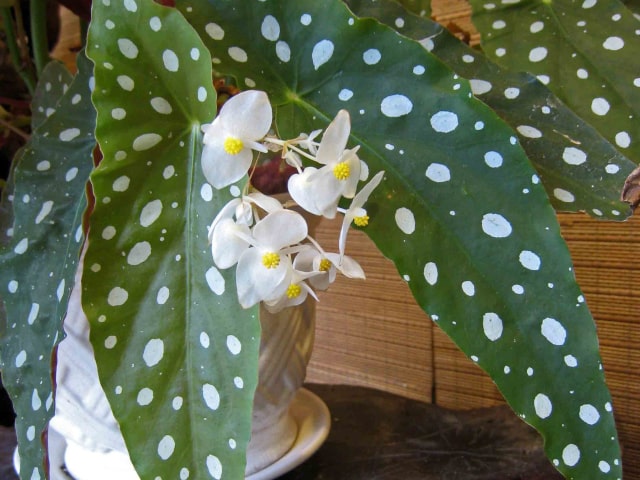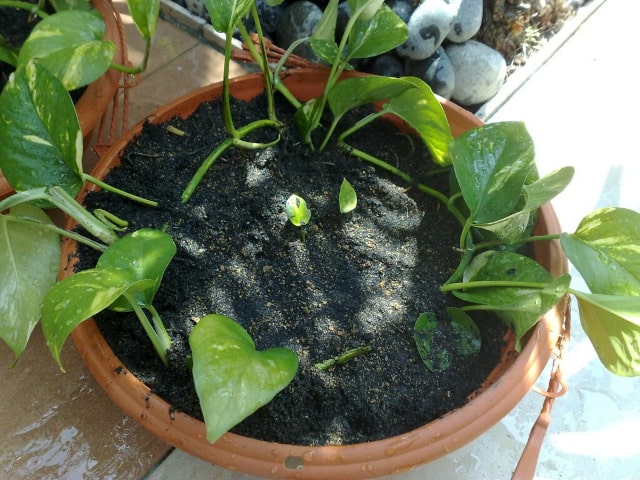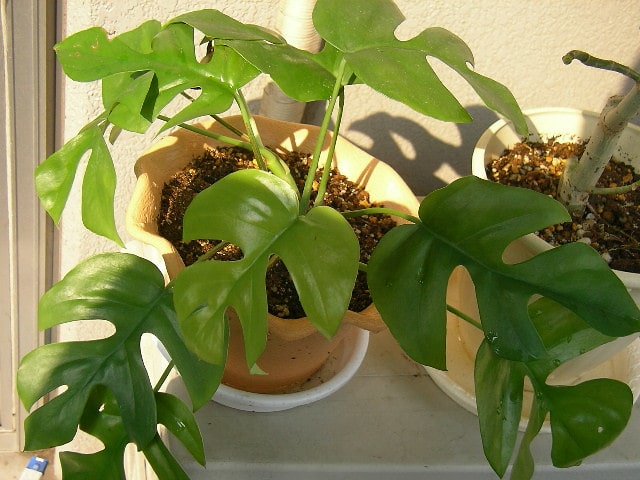
Begonia Maculata, also known as a Polka Dot Plant, Spotted Begonia or Polka Dot Begonia, is an eye-catching plant ideal for homes. There are many different varieties and hybrids of Begonias. These plants vary in sizes, shapes and colors. However, Begonia Maculata is one of the most beautiful o all begonias. It has characteristic silvery polka dots on the olive-green leaves, which creates a very effective sight. It is not surprising that many people choose Begonia Maculata for their home.
These spotted begonias are also known as Cane begonias. They have asymmetrical laves that grow on long stems resembling bamboo. While not specifically grown for flowers, it is important to know that a Begonia Maculata plant can bloom beautifully. It produces large clusters of white flowers growing on a single flower stem.
Begonia Maculata is a fast-growing plant that makes an excellent choice for an indoor gardening or a terrarium. A great thing about this variety is that it is not difficult to care for, so it is a good choice even for beginners who wish to have a gorgeous houseplant in their home.
Begonia Maculata Care
It is not difficult to make your Begonia Maculata thrive, as long as you provide it with some specific care requirements.
The first thing to remember is that Begonia Maculata prefers bright but indirect light. While it can grow in lower light situations, this is what it prefers. It means that you should provide your plant with plenty of light, but also keep it away from direct sun, particularly in the afternoons. Too much direct sun can quickly lead to burning a drying of the leaves.
On the other hand, even thought Begonia Maculata can tolerate some lower light conditions, it should never be put on a spot that is too dark. This can lead to leaves and the entire plant becoming leggy.
However, if your only choices are a spot with full sunlight or a place with less light, make sure to opt for a place with lower light levels. While your plant will not thrive, it will have a much better chance of survival than in the full, direct sun.
When it comes to watering, drainage holes are a must. Begonia Maculata cannot sit in water, so you need good drainage holes for water to escape. This will prevent waterlogging and root rot. You need to make sure that your chosen pot for Begonia Maculata has good drainage holes on the bottom.
You should water Begonia Maculata regularly, because these plants do not like to stay dry for long periods of time. It prefers soil to be a bit moist, so you need to ensure this. At the same time, it cannot withstand soggy roots. Ideally, you should allow the top part of the soil to dry out before you water your Begonia Maculata again. You should also let the pot drain completely before you put it back on the saucer.
Watering your Begonia Maculata during the growing season is easy. Keep in mind that during the high temperatures you might need to water it more often than usual. Watering in the winter is a bit more complex. It should be done less often and with less amount of water. Begonia Maculata plants do not go dormant, but their growth and metabolism slow down during the cold winter months, and your watering regime should follow this. If you continue watering during winter in the same way you do during the warmer months, that will be too much for your Begonia Maculata and might make it soggy and susceptible to problems such as root rot.
You should provide your plant with adequate feeding. It is best to fertilize with a liquid plant fertilizer twice per month. This will ensure that the leaves grow bigger, and it will also encourage your Begonia Maculata to bloom. However, you should not fertilize during the fall and winter. It is important to let your plant rest for a while.
If your plant blooms, make sure to observe the flowers regularly and remove them when they are spent. This is the best way to encourage your Begonia Maculata to flower again. While it does not work in all circumstances, it is the best method you can try.
Pruning and Propagation
Keep in mind that you can easily pinch and prune your Begonia Maculata when necessary. If you notice your plant becoming a bit leggy, pruning can rejuvenate it. Pinching and pruning a bit is also an excellent way to shape your plant easily. It can also lead to a fuller and more bushier plant, because new stems will grow from the places where you pruned the plant.
Late fall is the best time to prune your Begonia Maculata if it became too tall. This is the end of the active growing season, and the plant is done flowering during this time. You can easily cut back long stems and help your plant conserve some energy during the winter.
However, it is also possible to prune during the growing season. It is best done through simple pinching. Use your index finer and thumb to pinch small stems that grow off from the main stem. This approach encourages the plant to branch out and develop new stems, resulting in a fuller plant.
Begonia Maculata is very easy to propagate. Keep all the stems that you pruned off, because they can be used for creating new begonia plants. Ideally, you should get stem cuttings with one or two nodes. Place it in the water and wait for it to develop roots. After this happens, you can plant the new plant in soil and care for it as any other regular Begonia Maculata plant.
Potential Problems
Here are some common issues and potential problems you may encounter when growing Begonia Maculata in your home:
If you notice the plant's leaves turning yellow, especially if hey are also dropping, that is a sure wight of overwatering. Wait until the soil has dried out to water again. You should never let the roots of your Begonia Maculata to sit in water.
On the other hand, leaves that are brown and drooping are a sign of underwatering. Never allow soil to remain dry for too long.
Keep in mind that Begonia Maculata, as well as other begonias, are toxic to cats and dogs. Luckily, the most toxic parts of the plants are under the soil, so it is very rare for pets to get hurt by eating these plants. However, they can get sick, so make sure to grow your plant out of their reach.
Photo credit: nhq9801




0 Comments